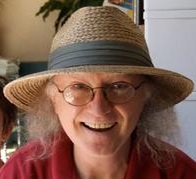7.3: Calvin Cycle
( \newcommand{\kernel}{\mathrm{null}\,}\)
The Calvin Cycle occurs exclusively in photosynthetic organisms and is the part of photosynthesis referred to as the “Dark Cycle." It is in this part of the process that carbon dioxide is taken from the atmosphere and ultimately built into glucose (or other sugars). Though reduction of carbon dioxide to glucose ultimately requires electrons from twelve molecules of NADPH (and 18 ATPs), it is a bit confusing because one reduction occurs 12 times (1,3 BPG to G3P) to achieve the reduction necessary to make one glucose.
One of the reasons students find the pathway a bit confusing is because the carbon dioxides are absorbed one at a time into six different molecules of ribulose-1,5-bisphosphate (Ru1,5BP). At no point are the six carbons ever together in the same molecule to make a single glucose. Instead, six molecules of Ru1,5BP (30 carbons) gain six more carbons via carbon dioxide and then split into 12 molecules of 3-phosphoglycerate (36 carbons). The gain of six carbons allows two three carbon molecules to be produced in excess for each turn of the cycle. These two molecules molecules are then converted into glucose using the enzymes of gluconeogenesis.

Like the citric acid cycle, the Calvin Cycle doesn’t really have a starting or ending point, but can we think of the first reaction as the fixation of carbon dioxide to Ru1,5BP. This reaction is catalyzed by the enzyme known as ribulose-1,5bisphosphate carboxylase (RUBISCO). The resulting six carbon intermediate is unstable and each Ru1,5BP is rapidly converted to 3-phosphoglycerate. As noted, if one starts with 6 molecules of Ru1,5BP and makes 12 molecules of 3-PG, the extra 6 carbons that are a part of the cycle can be shunted off as two three-carbon molecules of glyceraldehyde-3-phosphate (GA3P) to gluconeogenesis, leaving behind 10 molecules of GA3P to be reconverted into 6 molecules of Ru1,5BP. That part of the pathway requires multiple steps, but only utilizes two enzymes unique to plants - sedoheptulose-1,7bisphosphatase and phosphoribulokinase. RUBISCO is the third enzyme of the pathway that is unique to plants. All of the other enzymes of the pathway are common to plants and animals and include some found in the pentose phosphate pathway and gluconeogenesis.


